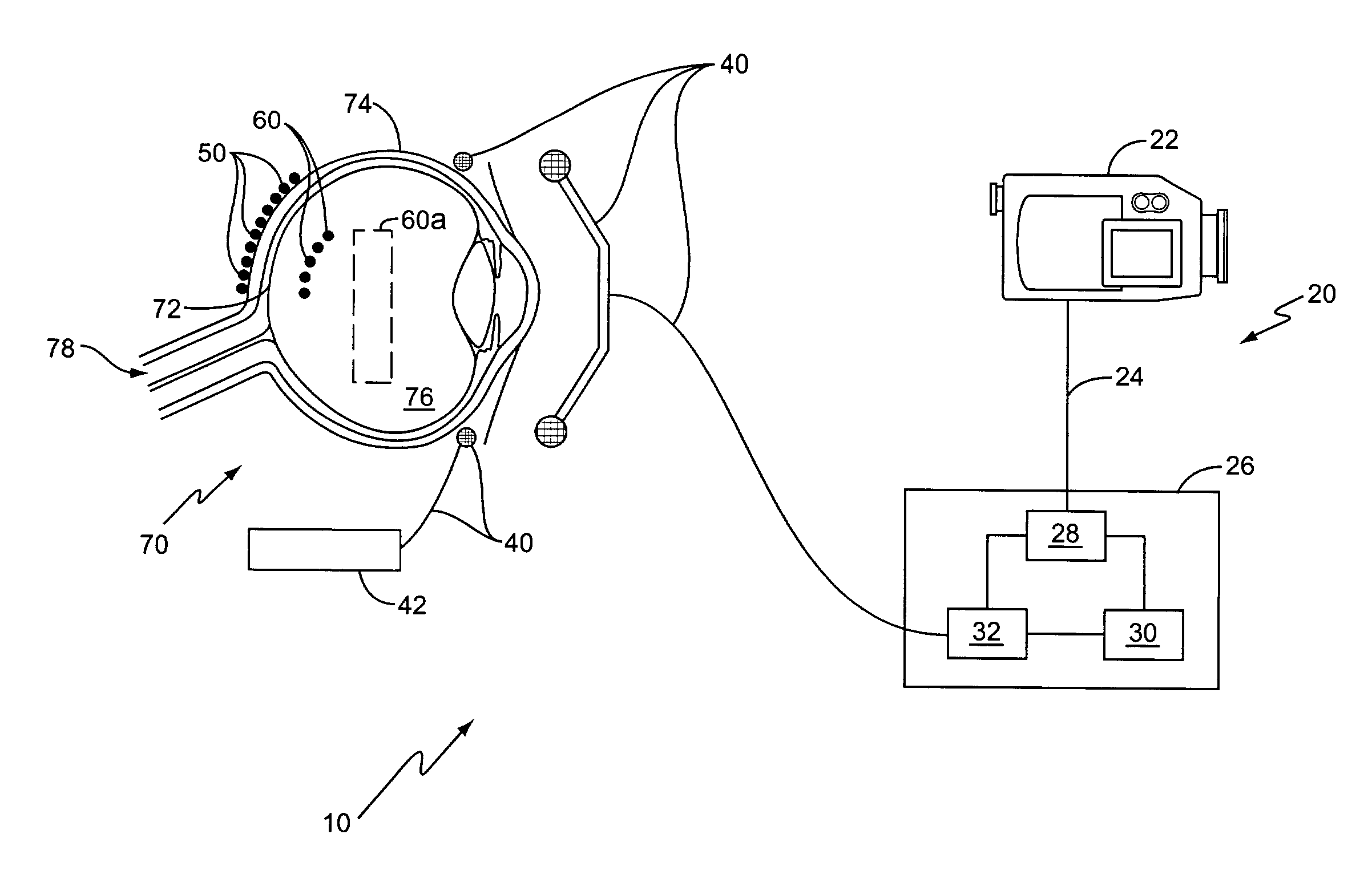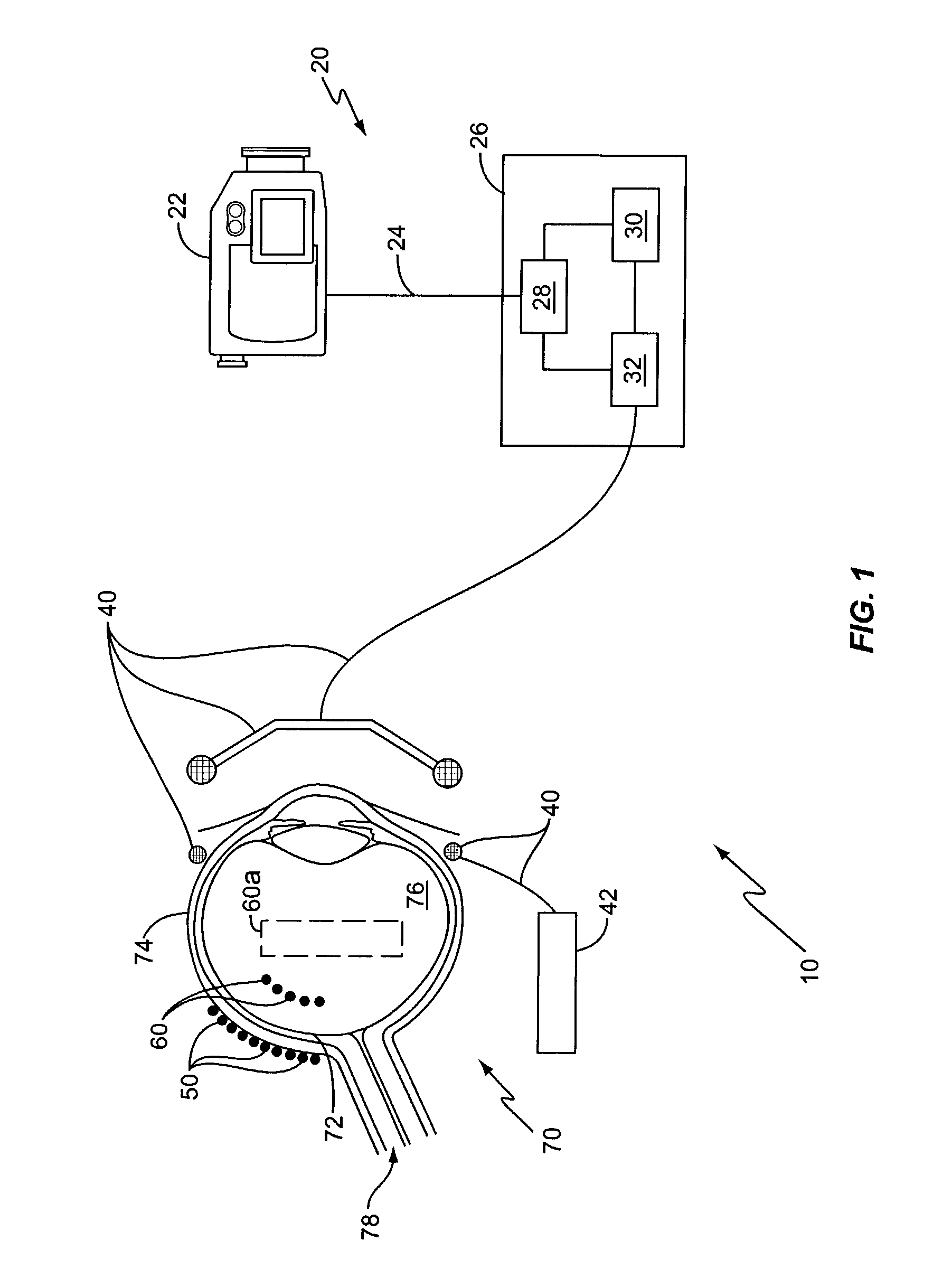Vision prosthesis for the blind and method for implementing same
- Summary
- Abstract
- Description
- Claims
- Application Information
AI Technical Summary
Problems solved by technology
Method used
Image
Examples
Embodiment Construction
[0014]FIG. 1 illustrates a visual prosthesis system, generally indicated by numeral 10, according to the present invention. Visual prosthesis system 10 includes various components, both internal and external to the eye 70 and the patient. Eye 70 includes retina 72, sclera 74, vitreous chamber 76, and optic nerve 78. For simplicity, other areas of the eye such as the cornea, lens, iris, and conjunctiva are not referenced in FIG. 1.
[0015]Visual prosthesis system 10 includes imaging electronics 20, data link 40, stimulating electronics 42, stimulating electrodes 50, and reference electrodes 60. The imaging electronics 20 include a camera or other image capture device 22 connected to processing electronics 26 via a data communications line 24. Processing electronics 26 include image processor 28, memory 30, and encoder 32.
[0016]In exemplary embodiments, image capture device 22 captures an image from the environment and transfers the image to the image processor 28 within processing elec...
PUM
 Login to View More
Login to View More Abstract
Description
Claims
Application Information
 Login to View More
Login to View More - R&D
- Intellectual Property
- Life Sciences
- Materials
- Tech Scout
- Unparalleled Data Quality
- Higher Quality Content
- 60% Fewer Hallucinations
Browse by: Latest US Patents, China's latest patents, Technical Efficacy Thesaurus, Application Domain, Technology Topic, Popular Technical Reports.
© 2025 PatSnap. All rights reserved.Legal|Privacy policy|Modern Slavery Act Transparency Statement|Sitemap|About US| Contact US: help@patsnap.com


